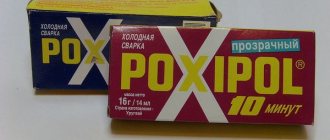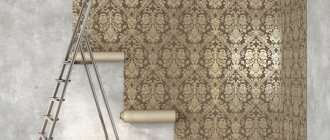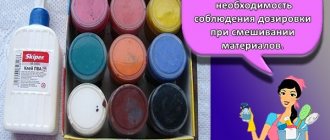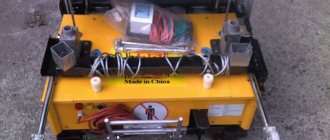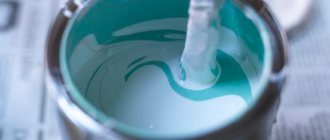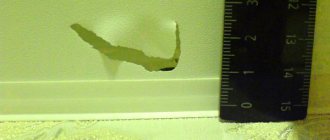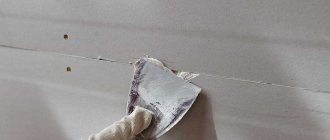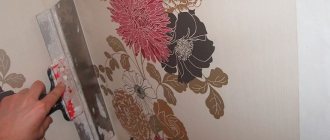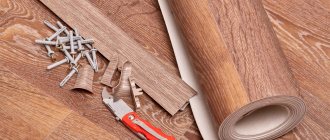Many people are familiar with the problem when their favorite shoes tear too quickly. This may be due to the use of low-quality fastening composition in production or due to mechanical damage. Buying new shoes is much more expensive than repairing old ones. For repair work, special nairite glue is often used.
General description and purpose
Nairit glue is a synthetic translucent solution with a yellowish tint, similar in consistency to resin. Creates a reliable and durable connection that can withstand various environmental influences.
The product can firmly glue rubber, leather, fabric, wood, metal, and PVC materials. The layer is airtight and water resistant.
If you try, you can glue the zipper to the fabric using glue, avoiding the need to sew the parts together. It is acceptable to use glass, tile, and plastic corners for gluing. In this case, the best choice would be an adhesive solution available in jars.
A tube-shaped container is more suitable for gluing products that are not susceptible to regular friction and stress.
Creates a reliable and durable connection that can withstand various environmental influences.
Storage and breeding
We figured out how to dilute the material if it has become very thick (gasoline and ethyl acetate in equal proportions). You can also wash your instruments with this liquid composition if necessary. This glue should be stored at temperatures from +6 to +22 degrees in undamaged production-type containers. Place the jars away from fire and heat sources, and the shelf life is 1 year.
Similar product "Desmokol"
This product is a polyurethane adhesive composition, which has become a new product among materials for boots. It can also be used for gluing chair legs, metal, linoleum, glass, and repairing rubber boats and equipment. Due to the high level of strength and reliability of the connection, Desmokol helps replace the more expensive nairite glue. Even when molding PVC soles, this product is added to the composition to improve performance characteristics. Usually the products are sold in large containers (up to 200 liters) and in small tubes of 50 grams. Application can also be divided into a couple of methods - hot and cold gluing. Both products (Nairit and Desmokol) are interchangeable, and often masters use them alternating with each other.
Composition and characteristics
Nairite shoe glue is a one-component product. The main component is a subspecies of rubber – nairit. In addition to it, organic solvents, chlorinated polymers, iron salts, and vulcanizers are used.
For shoes, glue is good because it seals the seam, is waterproof and keeps the shoes dry. After drying, it does not emit harmful elements. The following technical characteristics of the product can be distinguished:
- The amount of non-volatile elements is 24%;
- Density indicator 0.85 g/sq.cm;
- Maximum opening time – 65 minutes;
- Obtaining the highest strength indicator - 3 hours 10 minutes;
- Heat resistance 75 degrees.
For shoes, glue is good because it seals the seam, is waterproof and keeps the shoes dry.
What can glue
Nairite glue in the instructions from the manufacturer can be found out that it is suitable for fourteen types of materials. At the same time, a reliable fixation is created with everyone. To understand what the adhesive solution can be used for, you should explore the possible options.
Nairite glue in the instructions from the manufacturer can be found out that it is suitable for fourteen types of materials.
Skin to skin
It is convenient to work with leather, because the mixture is elastic and hardens quickly. After complete drying, the elasticity property does not disappear, which helps the layer to be preserved for a long time.
It is convenient to work with leather, because the mixture is elastic and hardens quickly.
Artificial materials
Among the artificial materials that can be glued with this glue are polypropylene and polystyrene. The latter type is chosen for thermal insulation of houses; neurite glue is used during installation.
Among the artificial materials that can be glued with this glue are polypropylene and polystyrene.
Nubuck
The material is used to make furniture or shoes. The glue can be suitable for gluing artificial and natural nubuck.
The glue can be suitable for gluing artificial and natural nubuck.
Shoe fabric
For the footwear industry, fabric materials that are durable are selected. Gluing with the product can be done with matting, felt, or calico.
For the footwear industry, fabric materials that are durable are selected.
Heel caps
Heels often fall off of heels, but a nairite solution helps to securely install them so that they continue to protect the heel from abrasion.
Heels often fall off the heels, but a nairite solution helps to install them securely.
Holds a candle
The outsole is a part of the shoe sole that serves to reinforce the heel area. It is also glued by a neurite.
The outsole is a part of the shoe sole that serves to reinforce the heel area.
Rubber
Rubber material, like nairite glue, is made from rubber and is often used in the furniture and footwear industries.
Rubber material, as well as nairite glue, is made from rubber.
Tree
Wooden parts require adhesive strength; in the furniture industry, this solution is chosen to connect small wooden elements together.
In the furniture industry, this solution is chosen to connect small wood elements together.
Metal
Typically, metal surfaces are secured with screws and other similar means, but lightweight parts can also be glued to the surface.
Lightweight parts can also stick to the surface.
Felt
Felt fabric can be needed in the manufacture of handbags, clothing items, and is sometimes used for furniture. It is not uncommon to choose to glue felt instead of sewing.
Felt fabric can be needed in the manufacture of handbags, clothing items, and is sometimes used for furniture.
Plastic
The plastic material is distinguished by the difficulty of adhesion; a strong connection of the plastic parts will help to obtain a solution in the rubber base.
A strong connection of plastic parts will help to obtain a solution in a rubber base.
Glass
In everyday life, there are times when it is necessary to glue glass elements, for example, for door panels. This solution will help you cope with the task quickly and efficiently.
Nairite glue will help glue glass quickly and effectively.
Ceramics
Ceramic products can crack or break over time; if this is the owner’s favorite item, then its integrity can be restored with nairite glue.
Ceramic products can be restored with nairite glue.
Porcelain
Porcelain dishes are beautiful and expensive, but at the same time quite fragile. Therefore, it often breaks. If the damage is minor, you can discreetly re-glue it.
If the damage is minor, you can discreetly re-glue it.
Application of Nairit glue for shoe repair
Professional shoemakers always use Nairit glue in their work to repair shoes made of natural and artificial leather. This is one of the most popular shoe repair items among craftsmen.
General characteristics of Nairit glue
As a rule, this glue is purchased in large containers, in jars with a volume of from a liter to three. Craftsmen know trusted stores where you can buy high-quality glue; in addition, it is often sold on tap in specialized stores.
Depending on the brand and manufacturer, the glue can be yellow or brown. Experienced shoemakers recommend buying Polish or Italian-made nairit; there is a cheaper option - Turkish products, but they are also of lower quality. It is worth noting that the highest quality Nairit glue is in jars, the same one that is sold in tubes does not have such high quality characteristics; of course, it also glues, but it does it less reliably and well. Turkish glues and glues in tubes should be used if you need to glue areas that will be subject to the least pressure and stress during use, for example, insoles or the upper part of boots.
Where is Nairit glue most often used?
With good quality Nairit shoe glue you can glue anything. Of course, mainly, it perfectly glues skin to skin; it is also useful when you need to glue outsoles or insert them using an inset rather than a zipper. This glue will do an excellent job of gluing fabric bases and even heels.
Advantages of Nairit glue over other types of shoe glues
This type of glue does not dry as quickly as others, so the craftsman has more time to properly place and arrange the shoe elements. This glue penetrates deeper and more reliably into the skin, which means it provides increased strength. Nairite has excellent elasticity and is also moisture resistant. When gluing elements that will not be subjected to heavy loads, this glue does not need to be heated before use, but in other cases it is necessary
This type of glue does not have the property of tightening the skin after drying, which is most important if the skin is thin
How to use Nairit glue?
Before use, you need to thoroughly rinse the shoes and especially those elements that need to be glued. Next, an adhesive layer must be applied to both surfaces to be glued, after 15 minutes a second layer should be applied, after about half an hour the exposure should be maintained, during which the glue will dry. Then we heat the surfaces with glue to 80 C so that the process of activating the glue begins; after heating, the elements of the shoes to be glued together should be pressed together.
January 16, Advertising article
Popular varieties
This type of adhesive is produced in different varieties. Among all those available, five are the most in demand. Each of them will be described in detail below.
This type of adhesive is produced in different varieties.
"Nairit-1"
This type is distinguished by quality and high efficiency. It is distinguished by the creation of a flexible adhesive seam, which allows it to be widely used for repair purposes in the shoe industry. The resulting seam can withstand low temperatures.
This type is distinguished by quality and high efficiency.
Sar-30E
It is produced by an Italian company. And it is a popular type because of its versatility and highly effective properties. It can be used to glue a large number of materials. Drying only takes a couple of hours.
It can be used to glue a large number of materials.
"Rapid 5"
This product is produced by a domestic manufacturer. Compared to foreign adhesives, it looks cheaper, but the quality is also high. Can be used for rubber, metal and plastic parts.
Can be used for rubber, metal and plastic parts.
"Anles"
Also produced in our country. It is usually chosen for gluing soles made from synthetic fabrics or genuine leather. When gluing, it is better to use the hot method.
It is usually chosen for gluing soles made from synthetic fabrics or genuine leather.
"Nairit 88P-1"
This type has many advantages: it creates a high-strength connection; resistance to temperature changes; fast drying rate; high degree of resistance to moisture.
This type has many advantages: it creates a high-strength connection; resistance to temperature changes.
Advantages and disadvantages
Nairite glue is a universal and very high-quality product, this is its main advantage. It contains only low-toxic substances, and glued products can be used without fear. Other advantages:
- high temperature resistance;
- elasticity, flexibility, plasticity even with decreasing temperature;
- connection reliability due to deep penetration into materials;
- resistance to water, salts, acids;
- ability to operate at low temperatures;
- preservation of properties during temperature changes.
The material is convenient to use and easy to use. The downside is the drying time - it is slightly higher than that of a number of analogues. But this allows you to calmly place the parts to be glued and have time to correct any flaws. The product does not need to be heated before application and gluing - a “cold method” of application is possible. After drying, it does not deform even the thinnest leather, so it can be used on expensive shoes.
Instructions for use
Glue Rapid instructions for use imply a choice between two options: hot method and cold. Each has pros and cons when working; a method is selected based on the conditions.
Glue Rapid instructions for use imply a choice between two options: hot method and cold.
Cold way
This technique begins with the preparatory stage. The base must be cleaned of all types of contaminants and degreased. The first layer is applied to a dry base, after 10-15 minutes, proceed to applying the second and joining the parts.
The base must be cleaned of all types of contaminants and degreased.
Hot way
For this method, they follow a certain scheme: apply the 1st layer; after 15-20 minutes, apply the next one; then the base warms up to a temperature of 80-85 degrees.
The base warms up to a temperature of 80-85 degrees.
How to remove glue from shoes
Before gluing the shoes, you need to clean them of old glue. Methods vary depending on the material, as it can be damaged.
How to remove glue from leather shoes
You can remove old glue from shoes using a special product that is sold in a specialty store. Apply the cleaner to the glue and let it soak for 10-15 minutes. Then use a soft sponge to remove the remaining substance from the shoes.
Alternatively, you can use a nail file. Using circular motions, try to brush only the adhesive to avoid damaging the skin.
How to Remove Super Glue from Suede Shoes
Suede can withstand any chemical reaction, so use ammonia or acetone to remove glue. Before cleaning, steam the area to make the surface soft. Then apply the cleaner and remove any remaining adhesive with a soft sponge.
How to remove glue from nubuck shoes
Nubuck is a substitute for suede, so the removal methods are similar. Specialized stores sell various creams and liquids for cleaning and restoring lint on shoes. Their use will protect shoes from negative reactions.
How to remove glue from fabric shoes
At home, you can use acetone, but only for undyed fabric. A safer method is to use a special tool “Contact” or “Minute”. Apply it to the remaining glue and leave for 10-15 minutes, then rinse with a damp sponge.
How to remove glue from leather shoes
Many people believe that leatherette can be treated with the same means as real leather, but this is not true. The leather substitute is more demanding, so the glue must be removed without the use of strong reagents. Make a soap solution, dampen a rag with it and apply it to the old glue in a circular motion.
How to remove glue from polished shoes
Take a pinch of table salt and fill the area with old glue. Then moisten a cotton pad with an alcohol solution and cover the salt with it for 2-3 hours. Then wipe with a soft sponge. Use mineral oil as an analogue of alcohol.
Methods for removing glue from the sole
In specialized stores you can purchase an appropriate solvent that effectively removes glue residue from labels and inserts on the sole. But there are also methods using products that everyone has in their home. For example, rubber cement can be removed effectively with an eraser, while harder substances can be cleaned with a nail file or sandpaper. Remove any remaining adhesive from the label or price tag using cologne, alcohol or acetone.
Shoes can be restored using special products or using home remedies, but you should not do this without knowing what material they are made of, as you will only worsen their condition. Follow the instructions and your shoes will look like new.
How to thin it if it's too thick
Over time, you may find that the adhesive mass has become too thick, then you can dilute it. In order not to spoil the properties, you need to act carefully. The diluent is gasoline with ethyl acetate, the proportion is 1 to 1, after stirring a homogeneous mass should be obtained.
The diluent is gasoline with ethyl acetate.
Useful tips
Several recommendations that will allow you to handle Desmokol correctly:
- Glue in granules must be diluted with a solvent. It is best to use acetone. For this purpose, 1 part of the granules is mixed with 10 parts of acetone. Typically, 20 grams of glue take 200 milliliters of solvent. The resulting mixture is kept for 7 – 8 hours. To make the process faster, you should maintain the room temperature within 25 - 30 degrees above zero. The result is a colorless solution. The composition is thoroughly mixed until a homogeneous mass is obtained.
- An additive called “Desmodur” improves the quality of the glue. It is added to Desmokol at the following rate: for 1 part of glue, 15 - 20 parts of additive. As a result, the thermal stability of the glue and the strength of the seam it forms improves.
Advantages and disadvantages
Both positive and negative aspects of the product are noted. The advantages include strength, heat-resistant, elastic properties, moisture resistance, and the ability to withstand temperature changes. The downside is the relatively long hardening time of the seam, when compared with other adhesive types.
The advantages include strength, heat resistance, elasticity, moisture resistance, and the ability to withstand temperature changes.
Analogs
Not long ago, an analogue of nairite glue, Desmokol, appeared on the market; it can also create reliable adhesion between parts made of various materials. And it became widely used in the shoe industry. It stands out for its low cost compared to the glue discussed in the article. They produce large jars with the composition, or small tubes.
Can create reliable adhesion between parts made of a variety of materials.
If there is a need to glue the sole of a shoe, then nairite glue can help out; you can use it yourself. By not resorting to shoe repair, this way you can save money. In everyday life it can be used for other materials.
TOP 5 brands of glue
When choosing nairite glue, you should pay attention to the packaging. The composition in tubes is suitable for products that are operated under conditions of low friction and pressure. For example, for shoes these could be tops. In cans, the mass forms a dry residue with higher technical indicators of strength, durability and ductility. For example, there are brands that are acceptable for repairing rubber tires.
Nairit-1 or 88P-1
The main component is polychloroprene rubber. Used for gluing synthetic, cellulose, metal substrates, leather, wood, and fabric. For humans, the advantages include the absence of toluene and other toxic components. The dry residue is not afraid of low temperatures and moisture.
RABOKOLL 406
The one-component analogue from Italy is characterized by high adhesion to synthetic and natural materials: fabric, leather, cork, rubber. The composition tolerates changes in temperature and humidity well and adheres well to the base.
SAR-30E
Italian nairite product from Kendra Farden based on polychloroprene. Universal glue is applicable both at the stage of assembling blanks, installing heels, plugs, insoles, and in decorative finishing with leather or substitutes. The composition can be applied using the “cold” and “hot” methods. The products must be used after 24 and 6 hours, respectively.
ALCOR
Italian glue based on a mixture of solvent and nairite resin is relevant for sewing and shoe repair work. Materials to be glued: leather, rubber and plastic samples. The shelf life of the material is limited to 8 months, but further use is actually permissible after checking the declared characteristics.
When working with adhesive mass, it is important to create conditions for good ventilation. This can be explained by the content of toxic and explosive substances.
Anles
The uniqueness of the one-component product with a low content of formaldehyde resin lies in its wide range of operating temperatures. Glued products are acceptable for use in conditions from -400 to +700 degrees Celsius. The film is not afraid of water and retains its shape due to its high elasticity.
The nairite composition is of a synthetic nature and contains organic solvents. The material is intended for gluing natural and polymer materials. Suitable for use in the construction industry.
